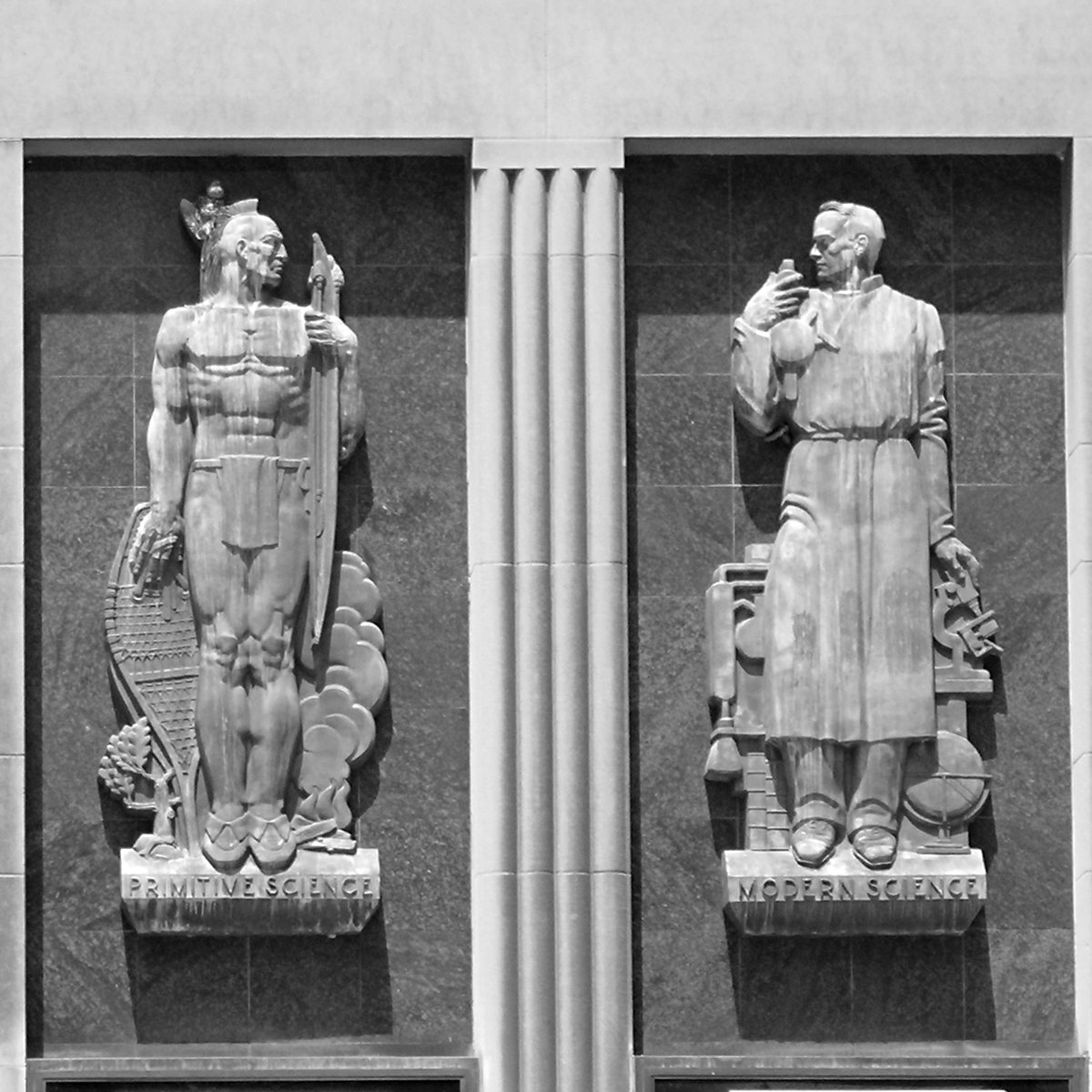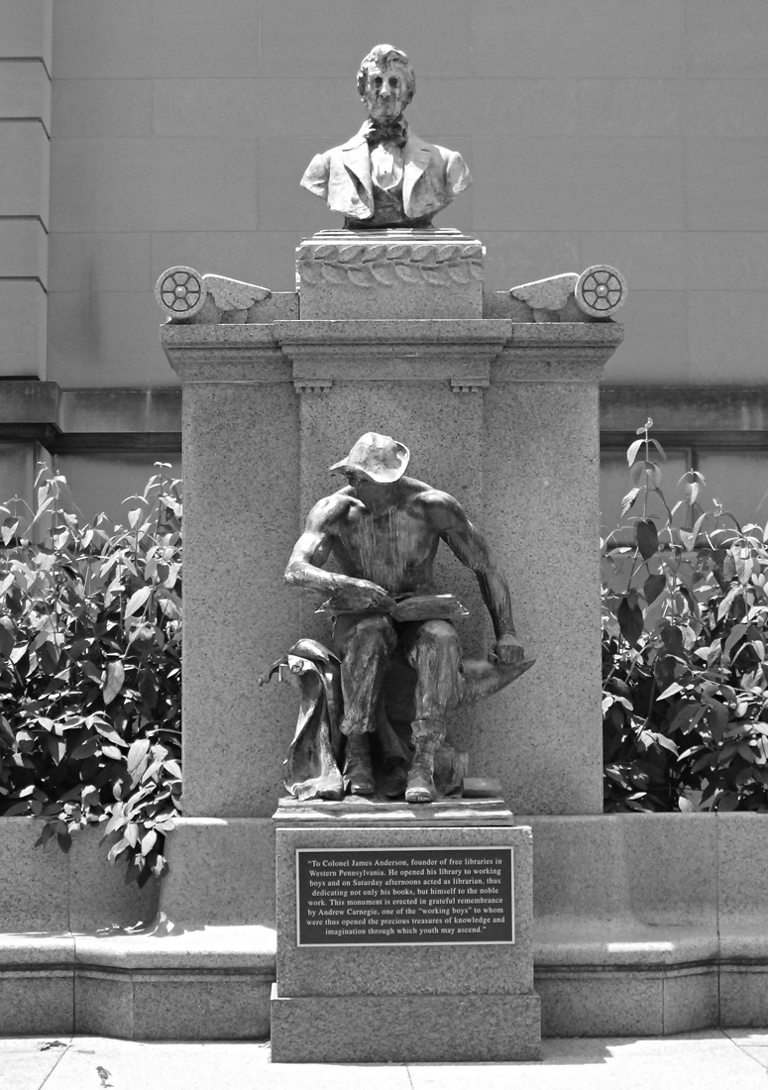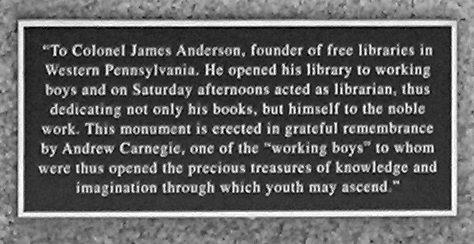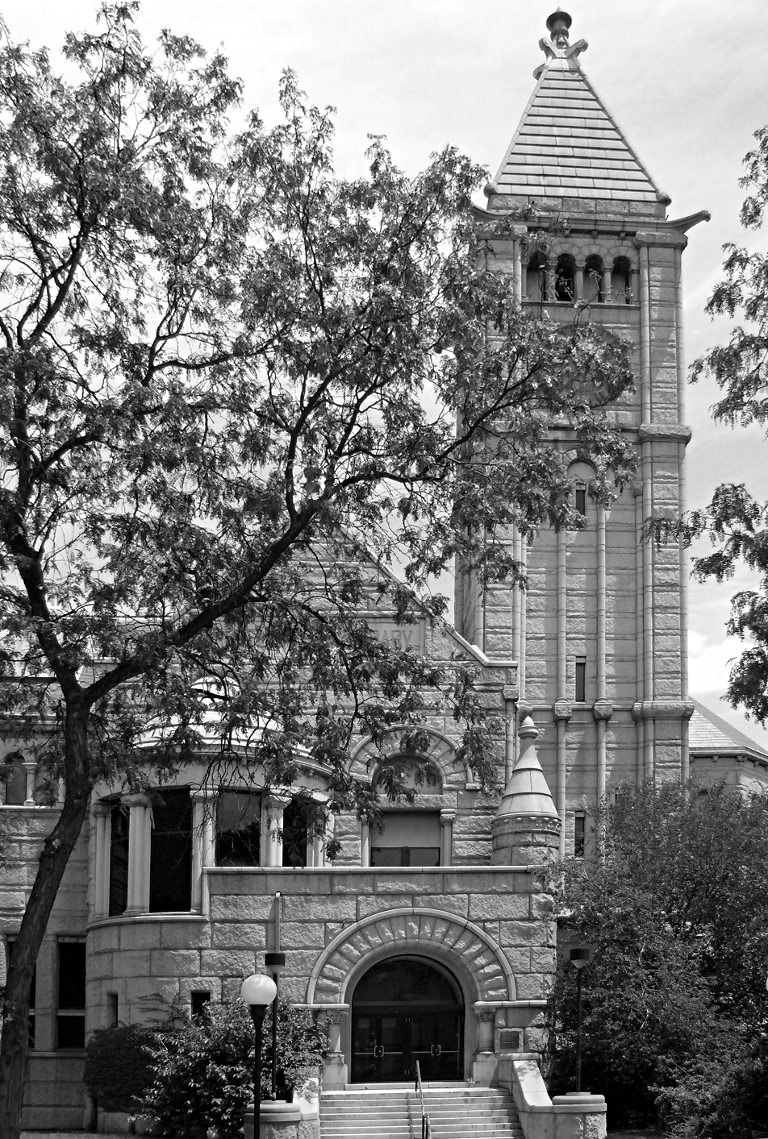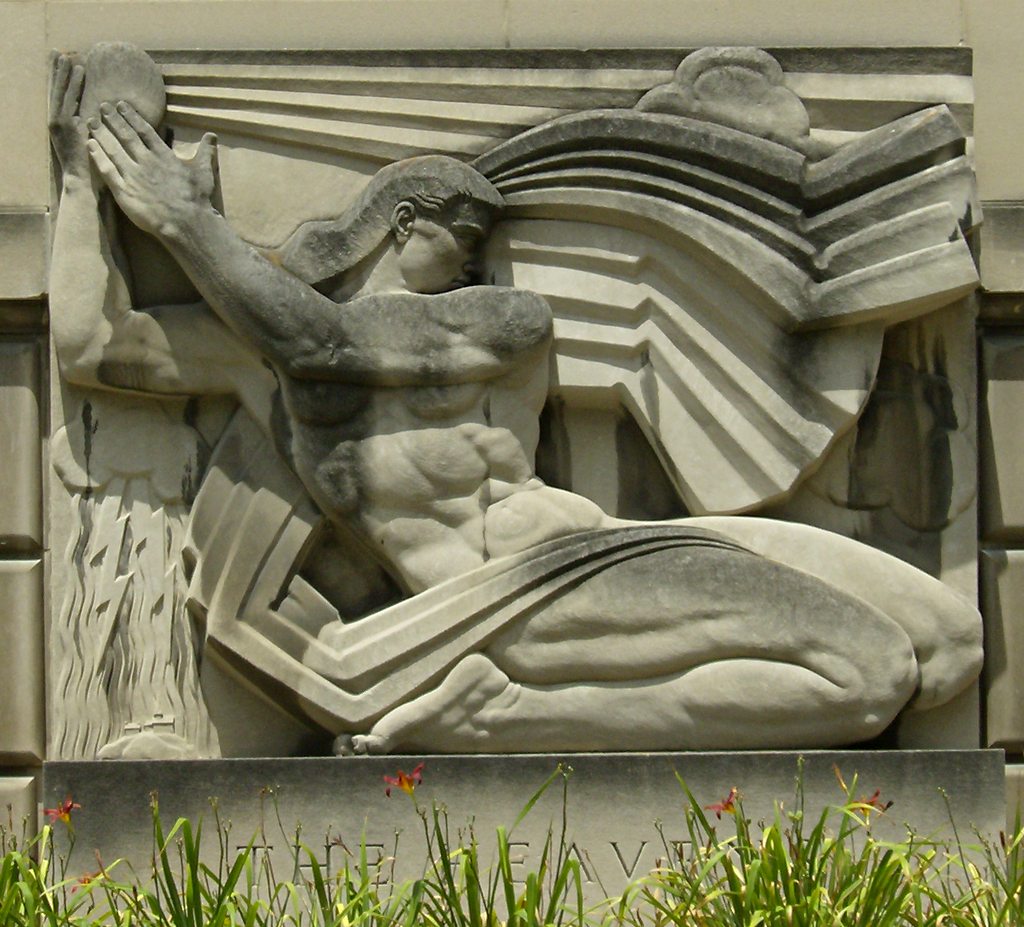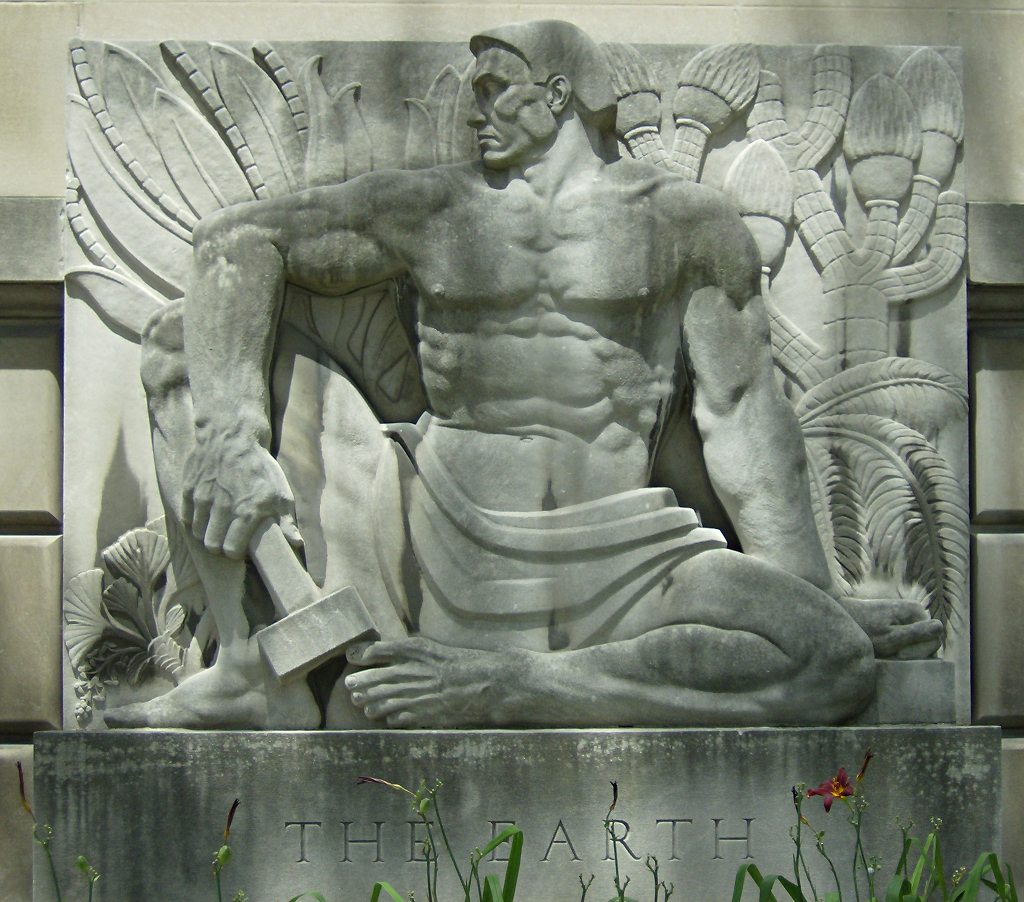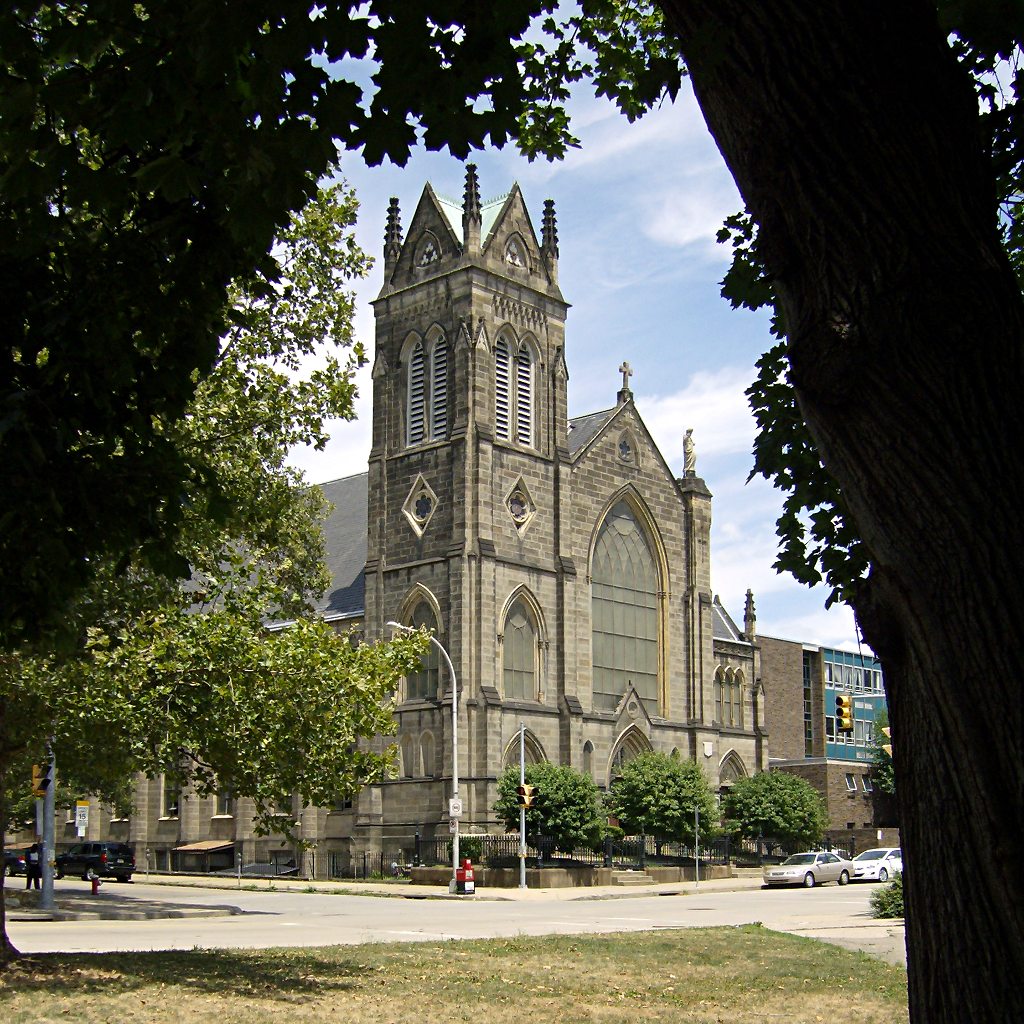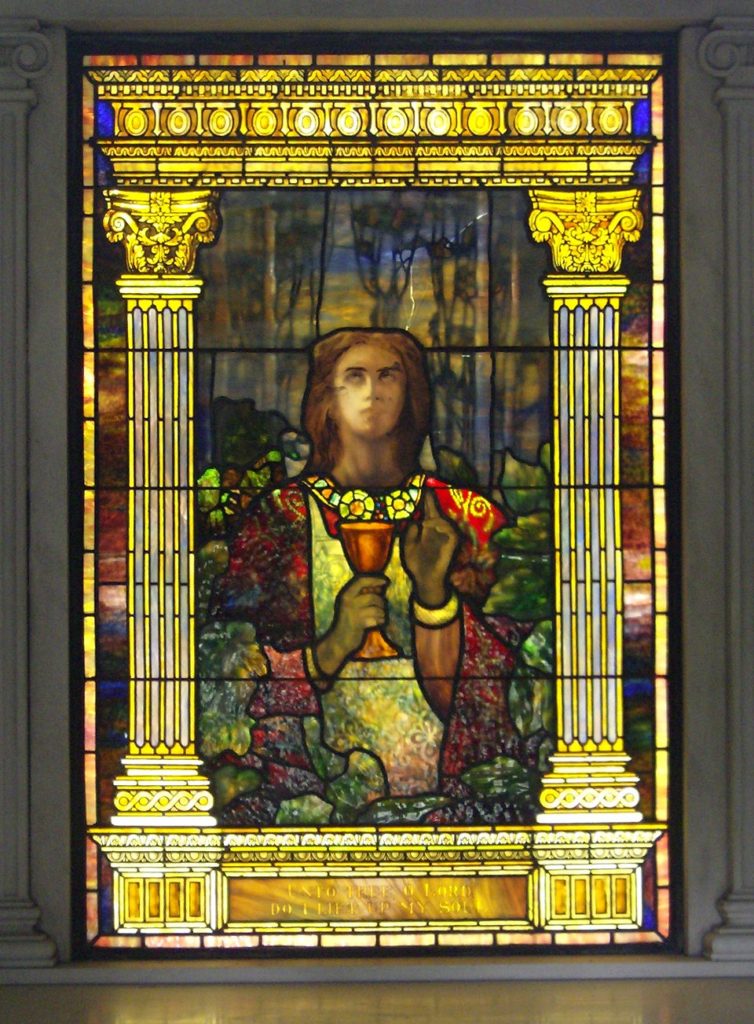
This gorgeous Pre-Raphaelite window is at the back of the George J. Schmitt mausoleum in the Union Dale Cemetery, where the rich and influential of Allegheny City went to slumber in eternal style. Its Grail imagery seems to combine two forms of the Grail legend (the Grail as cup of the Last Supper and the grail as mystical jewel). The legend below reads, “Unto thee O Lord do I lift up my soul.”
Anyone worth knowing in the Union Dale cemetery has stained glass in his mausoleum. In fact, for a while in the early 1900s, it was fashionable to have a portrait of the deceased rendered in glass.
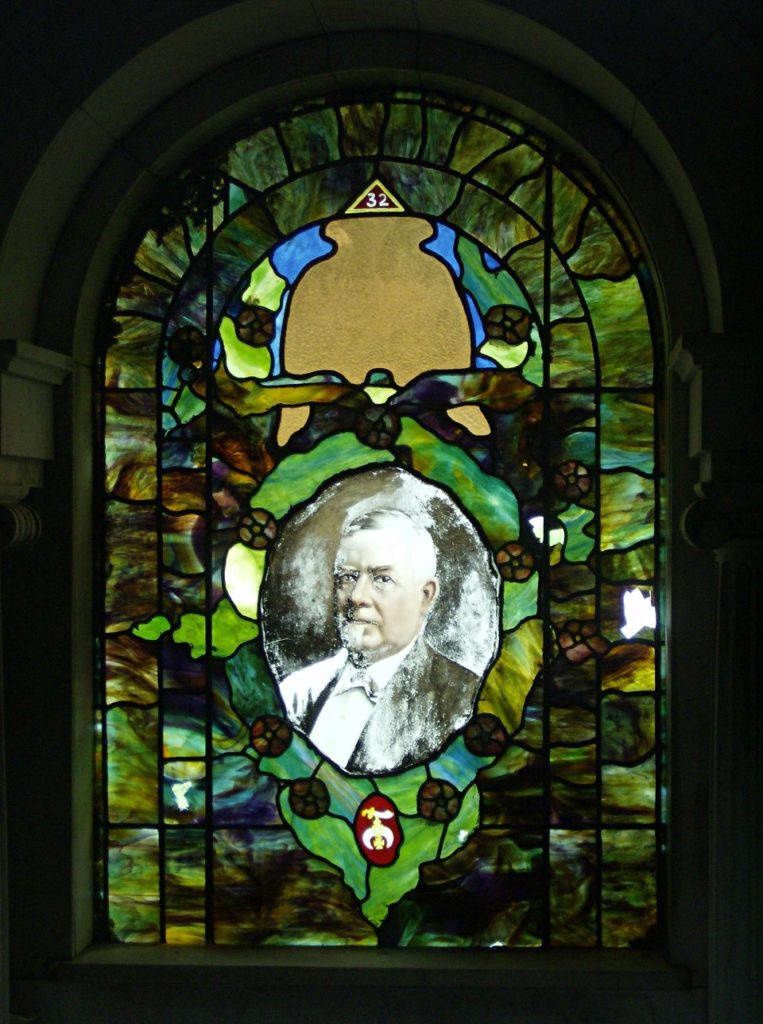
Here, for example, is Mr. William H. Walker (1841-1904), who was apparently a proud Shriner. His portrait has deteriorated a little, but not so much that you would not recognize him at once if you met him in the street.
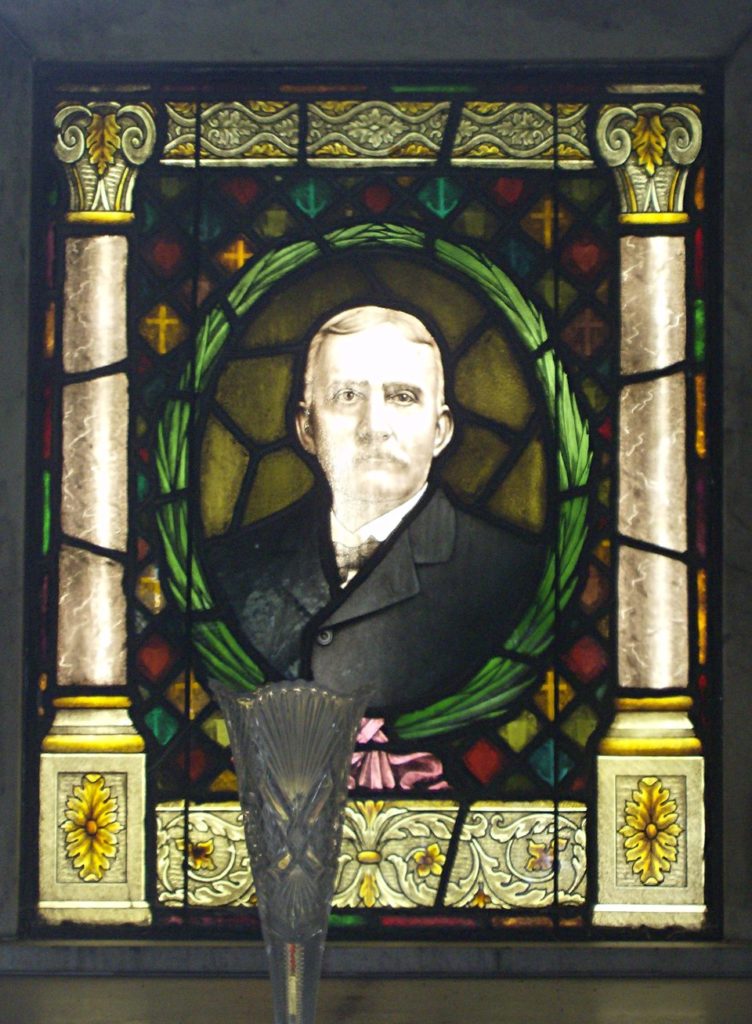
Mr. William H.Teets (1845-1906; perhaps stained-glass portraits were offered only to men named William H.) has also deteriorated a little, but the portrait is still lifelike enough that you can almost feel the macassar oil.
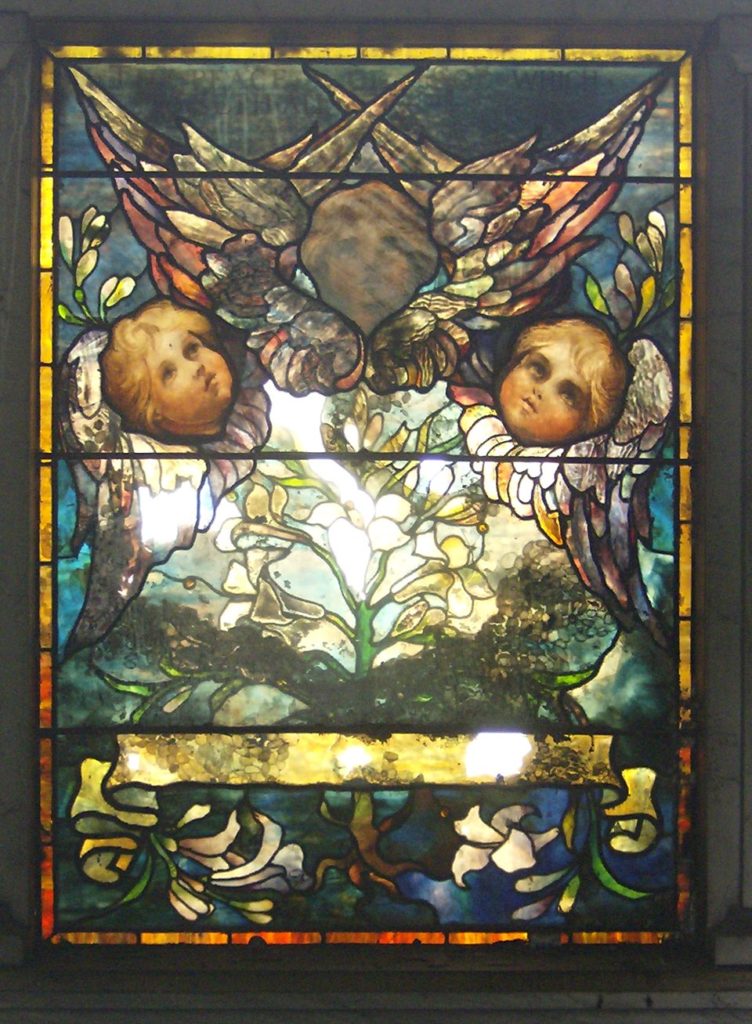
Cherubs and lilies adorn the mausoleum of the McLain family. The cherubs’ faces seem to be executed with a degree of skill that the rest of the composition lacks; perhaps they were ordered from a catalogue.

The Enlow-Schwer mausoleum, built in the late 1930s, affects a more abstract symbolism.
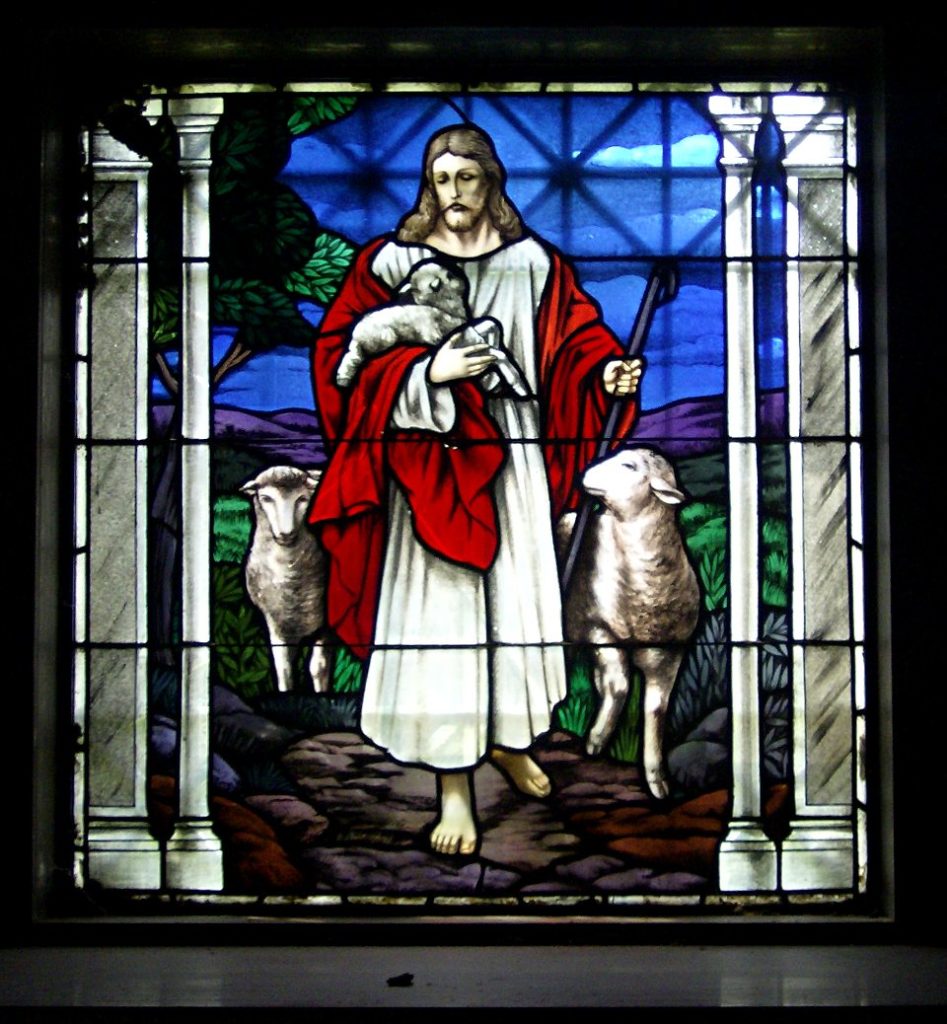
Finally, a Good Shepherd window, which could probably be ordered in standard sizes from national dealers, adorns the Short mausoleum.
There are some who would question the wisdom, or the taste, of building an extravagant monument to the memory of the deceased. Father Pitt would like to suggest, however, that money laid out on art that is still giving us pleasure after a century is hardly misspent.




